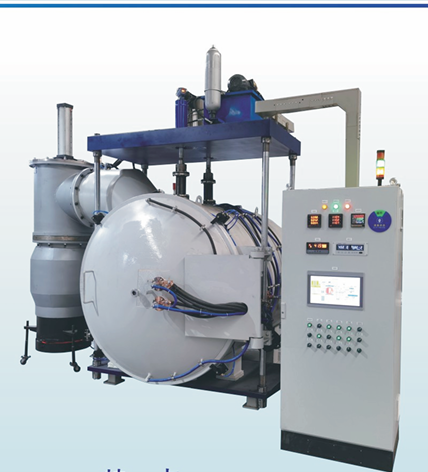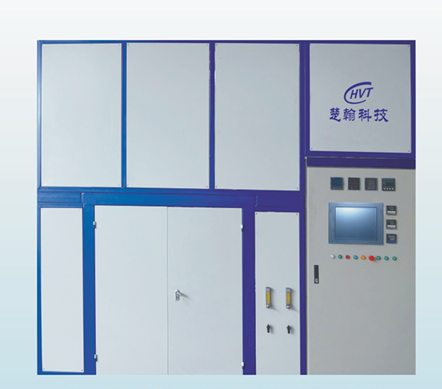فهم أساسيات التحكم في درجة الحرارة لأفران المعادن
لماذا تعتبر الدقة مهمة في العمليات المعدنية
يُعد التحكم في درجة الحرارة بشكل دقيق أمرًا بالغ الأهمية في مجال صناعة المعادن، لأنه يُغير من مظهر المعادن على المستوى المجهرى ومن خصائصها الوظيفية. إن إدارة درجات الحرارة بدقة تُحدث فرقًا كبيرًا فيما يتعلق بالقوة الميكانيكية وباقي الخصائص الفيزيائية، مما يُترجم إلى أداء أفضل بشكل عام من المنتج النهائي. أظهرت الدراسات أن الحفاظ على درجات الحرارة ضمن نطاق 5 درجات مئوية في أي من الاتجاهين يُعزز فعليًا كلًا من القوة والمرونة في أنواع مختلفة من السبائك. وبما أن هذه التغيرات الطفيفة في درجات الحرارة تؤثر على كيفية اصطفاف الذرات داخل المعادن، فإن تشغيل المعدات مثل الأفران المتخصصة بشكل صحيح أمر بالغ الأهمية للحصول على نتائج جيدة في عمليات إنتاج المعادن في العالم الواقعي. وتساعد الفحوصات والتعديلات الدورية أثناء عملية المعالجة في التأكد من أن المواد النهائية تلبي المواصفات المطلوبة للاستخدامات المختلفة، بدءًا من قطاع البناء وانتهاءً بالتطبيقات الجوية والفضائية، مما يقلل الهدر ويوفّر المال على المدى الطويل.
تأثير التقلبات الحرارية على خصائص السبائك
عندما تتقلب درجات الحرارة بشكل كبير، يمكن أن تتأثر خصائص السبائك المختلفة، مما يؤدي إلى مشاكل مثل التبريد أو التسخين غير المتساوي الذي يخلق إجهادات داخلية داخل المواد. غالباً ما تؤدي هذه التقلبات في درجات الحرارة إلى فشل المكونات، وهو أمر لا يريده أي مُصنّع أثناء تشغيل العمليات الصناعية. تشير الأبحاث إلى أن التغيرات الصغيرة في درجة الحرارة قد تقلل مقاومة التعب بنسبة تصل إلى 30٪ في بعض الحالات، مما يجعل التحكم الجيد في درجة الحرارة أمراً بالغ الأهمية. تحتاج السبائك إلى معالجة دقيقة نسبياً للحفاظ على سلامتها الهيكلية طوال مراحل الإنتاج. ولذلك، فإن الحفاظ على درجات حرارة ثابتة من خلال أنظمة أفران المعادن الموثوقة يصبح أمراً بالغ الأهمية للمصانع التي تعمل مع المعادن. تساعد الاستقرار المناسب في درجة الحرارة على تجنب نقاط الإجهاد غير المرغوب فيها، ويطيل من عمر المواد قبل الحاجة إلى استبدالها، ويجعل كل شيء أكثر متانة مع مرور الوقت.
تقييم أنواع الأفران للتطبيقات عالية الدقة
أفران الحث: تسخين سريع ومتجانس للسبائك
تعمل أفران الحث بشكل جيد للغاية من خلال التسخين باستخدام الحث الكهرومغناطيسي، مما يساعد في انتشار الحرارة بشكل متساوٍ عبر المواد. يفضل العديد من المصنّعين هذه التقنية لأنها توفر أيضًا الطاقة، حيث تقلل من استهلاك الكهرباء بنسبة تصل إلى 20٪ مقارنة بالطرق القديمة. ويجعل ذلك هذه الأفران خيارًا ممتازًا للعمل مع السبائك التي تتطلب تحكمًا دقيقًا في درجة الحرارة. إن التسخين الموحّد مهم جدًا في بعض قطاعات التصنيع حيث تكون الثبات في درجة الحرارة أمرًا بالغ الأهمية. عندما يتم تسخين الأجزاء بشكل غير متساوٍ، فإنها غالبًا ما تنتهي بعيب تصنيعي أو تتطلب خطوات معالجة إضافية، وهو أمر لا يريده أحد لأنه يضيع الوقت والمال.
مقارنة بين الفرن القوسي الكهربائي والفرن الذي يعمل بالغاز من حيث القدرات
تتميز أفران القوس الكهربائي لأنها توفر تحكمًا دقيقًا في درجة الحرارة إلى جانب عملية انصهار فعالة، مما يجعلها مناسبة للعمل مع المعادن الحديدية وغير الحديدية على حد سواء. عادةً ما تكون الأفران التي تعمل بالغاز أقل تكلفة في التشغيل اليومي، ولكنها لا تضاهي الدقة في التحكم. ولذلك، يفضل العديد من المصنعين استخدام الوحدات الغازية في المهام التي لا تكون فيها درجات الحرارة الدقيقة مهمة للغاية، مثل مهام التسخين الأساسية أو الخطوات الأولية في المعالجة. في المقابل، تحظى أفران القوس الكهربائي باهتمام كبير في إنتاج المعادن عالية الجودة، حيث يمكن أن تؤدي التغيرات الصغيرة حتى في درجات الحرارة إلى فرق كبير في جودة المنتج النهائي.

تأثيرات تصميم الغرفة على الاستقرار الحراري
إن تصميم غرفة الفرن يُحدث فرقاً كبيراً من حيث الحفاظ على الاستقرار الحراري. الجودة العازلة وطريقة حركة الهواء داخل الغرفة هما عنصران مهمان في هذا السياق. عندما يُحسن المصنعون تصميم شكل الغرفة، يمكنهم تقليل فقدان الحرارة والحفاظ على درجات حرارة أكثر ثباتاً أثناء عملية المعالجة. وهذا أمر مهم لأن لا أحد يرغب في وجود مناطق ساخنة أو باردة تُفسد العمل. كما أن اختيار مواد عازلة جيدة لا يتعلق فقط بمنع فقدان الحرارة. إذ تعني العزلة الأفضل تقليل فاتورة الطاقة أيضاً، مما يساعد المصانع على العمل بكفاءة أكبر على المدى الطويل. تستفيد الأفران المعدنية بشكل خاص من هذه التحسينات، نظراً لأن الحفاظ على درجات حرارة دقيقة أمر بالغ الأهمية لضمان معالجة صحيحة للمواد.
أنظمة التحكم الحرجة لأنظمة التدفئة الدقيقة
وحدات تحكم PID المتقدمة للتعديلات الديناميكية
تُعدُّ وحدات التحكم من نوع PID مهمة للغاية عند السعي لتحقيق التحكم الدقيق في درجة الحرارة. تعمل هذه الأنظمة المتقدمة من خلال آلية تُسمى التحكم التناسبي-التكاملي-التفاضلي (Proportional-Integral-Derivative)، حيث تقوم باستمرار بإجراء تعديلات على كمية الحرارة المُضافة للأفران بناءً على القياسات الفعلية التي يتم تسجيلها في كل لحظة. تُظهر التجارب في خطوط الإنتاج أن ترقية إعدادات PID في المصانع تؤدي غالبًا إلى تحسين استقرار درجة الحرارة بنسبة تصل إلى 40٪ في تلك الحالات المعقدة التي تتغير فيها الظروف باستمرار. بالنسبة للصناعات التي تعتمد بشكل كبير على دقة درجة الحرارة، مثل صناعة أشباه الموصلات أو معالجة الأغذية، فإن هذا النوع من التحكم يُحدث فرقًا كبيرًا. فهو يضمن ثبات جودة المنتجات من دفعة إلى أخرى، كما يوفّر المال على المدى الطويل من خلال تقليل هدر الطاقة.
وحدات التحكم المنطقية القابلة للبرمجة للدورات المعقدة
تُعد وحدات التحكم المنطقية القابلة للبرمجة، والمعروفة اختصارًا باسم PLC، عنصرًا أساسيًا في أتمتة تلك الدورات المعقدة للتسخين التي يجب أن تحدث بنفس الطريقة كل مرة. ما يجعل هذه الوحدات مفيدة للغاية هو قدرتها على التعامل مع مختلف العوامل التي تؤثر على كيفية تسخين الأشياء. وعند التعامل مع متطلبات تسخين معقدة للغاية، تتميز وحدات التحكم PLC بأنها تتيح للعاملين تعديل الإعدادات بالضبط بالطريقة التي يرغبون بها لكل حالة على حدة. كما أن الجانب المتعلق بالأتمتة يوفر الكثير من الوقت والجهد ويحقق نتائج أفضل بشكل عام. ولهذا السبب يعتمد العديد من المصنعين على أنظمة PLC عندما يحتاجون إلى تحكم دقيق في عمليات الإنتاج الخاصة بهم.
رد الفعل بالأشعة تحت الحمراء للمراقبة في الوقت الفعلي
توفر أجهزة الاستشعار تحت الحمراء معلومات فورية حول كيفية انتشار الحرارة على الأسطح، مما يساعد على ضبط عملية التسخين بدقة. وعندما تظهر المشاكل، تتيح هذه الأجهزة للمشغلين إصلاحها على الفور قبل أن تصبح درجات الحرارة مرتفعة جدًا أو منخفضة جدًا، وهو ما يؤدي غالبًا إلى عيوب في المنتج النهائي. وخصوصًا بالنسبة لورش العمل الخاصة بمعالجة المعادن، فإن الحفاظ على درجات الحرارة المثالية أثناء دورات الإنتاج يلعب دورًا كبيرًا في ضمان جودة المنتج. ويعني المراقبة في الوقت الفعلي أن المصانع يمكنها اكتشاف المشكلات مبكرًا، وبالتالي تحقيق نتائج أفضل مع تقليل هدر المواد والوقت بشكل عام. إن هذا النوع من الأنظمة منطقي بالفعل للأعمال التجارية التي تسعى لخفض التكاليف دون التفريط في معايير المنتج.
تعزيز الدقة من خلال المراقبة والتغذية الراجعة
أفضل الممارسات لوضع مقياس حرارة ثنائية الفلز
إن وضع أزواج حرارية في المواضع الصحيحة يُحدث فرقاً كبيراً عندما يتعلق الأمر بالحصول على قياسات دقيقة لدرجة الحرارة داخل الأفران المعدنية. يجب تركيب هذه المستشعرات في الأماكن التي يكون فيها تأثيرها الأكبر على العمل المطلوب، سواء كان ذلك يعني التقاط مناطق الحرارة الشديدة أو مراقبة المناطق الأبرد وفقاً لاحتياجات معالجة المعادن. إن اتباع الممارسات القياسية يساعد في تجنب أخطاء القياس المحبطة التي تحدث عندما يتم تركيب المستشعرات بشكل عشوائي. وعند تنفيذ ذلك بشكل صحيح، فإن الاهتمام بهذه التفاصيل يُحقق عائداً كبيراً من حيث موثوقية قياسات الحرارة عبر مختلف عمليات التشغيل للأفران.
بروتوكولات الت headibration لضمان الأداء المستمر
تحتاج أفران المعادن إلى فحص دوري لمقياس الحرارة وأنظمة التحكم كي تستمر في العمل بسلاسة. يجد معظم المصانع أن إجراء هذه المعايرات كل ثلاثة أشهر يمنع حدوث انحرافات في القراءات تؤثر على جودة الإنتاج. الخبراء المسؤولون عن وضع معايير الصناعة يدرجون بالتأكيد هذه المعايرات ضمن قائمة المهام الضرورية للصيانة وللتحكم في الجودة. لقد شهدنا بأم أعيننا كيف يحافظ الالتزام بهذه الإجراءات الروتينية على دقة قراءات أفراننا لأشهر متتالية دون حدوث أي مفاجآت غير متوقعة.
دمج المراقبة عن بعد في سير العمل
عندما يتم دمج المراقبة عن بُعد في العمليات металлورجية، يحصل العمال على إمكانية الوصول إلى البيانات الحية في أي وقت ومن أي مكان، مما يتيح اتخاذ قرارات ذكية دون الحاجة إلى التواجد المادي في الموقع. في الواقع، تُقلل هذه الأنظمة من الأخطاء التي يرتكبها البشر بنسبة تصل إلى 20 بالمئة وفقًا لبعض الدراسات، مما يعني أن العمليات تعمل بشكل أكثر سلاسة بشكل عام. تظهر الميزة الحقيقية في البيئات الصناعية المتغيرة بسرعة، حيث يلعب إجراء التعديلات بشكل صحيح وسريع دورًا كبيرًا في الحفاظ على معايير الإنتاج وبروتوكولات السلامة.
عناصر التصميم المؤثرة على الاستقرار الحراري
مواد العزل التي تقلل من فقدان الطاقة
اختيار مادة العزل المناسبة يُحدث فرقاً كبيراً عندما يتعلق الأمر بتقليل هدر الطاقة والحفاظ على تشغيل الأفران بكفاءة. عندما تختار الشركات عزلًا ذا جودة عالية، فإنها تلاحظ في كثير من الأحيان توفيرًا حقيقيًا في التكاليف، إذ يقلل العزل الجيد من خسائر الطاقة إلى نحو 10% أو أقل، وفقًا للبحوث. وبعيدًا عن توفير المال فقط، فإن هذه المواد تحافظ على استقرار درجات الحرارة داخل الأنظمة الصناعية، مما يعني تقليل وقت التوقف وتقليل المشاكل المتعلقة بالصيانة. وللشركات المصنعة التي تحاول التوفيق بين أهداف الاستدامة والاعتبارات المالية، فإن الاستثمار في عزل مناسب لا يُعد فقط منهجًا ذكيًا في العمل، بل هو ضرورة عملية للبقاء تنافسيًا في السوق الحالي حيث تستمر تكاليف الطاقة في الازدياد.
هندسة الغرفة وتوزيع الحرارة
يُعد شكل وتصميم غرف الأفران مهمًا جدًا من حيث كيفية انتشار الحرارة في النظام بأكمله، وهو أمر ضروري لتحقيق درجات حرارة متسقة، وخاصة في عمليات معالجة المعادن. عندما يُحسن المهندسون تصميم غرفة الفرن، فإنهم يُحدثون أنماطًا أفضل لتوزيع الحرارة، وهذا يُحدث فرقًا كبيرًا في ما إذا كان المنتج النهائي يلبي معايير الجودة أم لا. كما أن التصاميم المحسنة للغرف تمنع بالفعل تشكل مناطق ساخنة أو باردة داخل الفرن. ويمكن أن تؤثر هذه التغيرات في درجات الحرارة على خصائص المواد، مما يجعل بعض الأجزاء أضعف من غيرها أو يؤدي إلى تغييرات هيكلية غير مرغوب فيها في المعدن قيد المعالجة.
آليات الإغلاق من أجل التحكم في الغلاف الجوي
تُعد أنظمة الإغلاق الجيدة مهمة حقًا عند الحفاظ على الجو المناسب داخل الأفران. بدون ختم مناسب، هناك دائمًا خطر التلوث أو الأكسدة، وكلاهما يمكن أن يفسد المواد قيد المعالجة. عندما يقوم المصنعون بتنفيذ ختم صحيح، يلاحظون تحسنًا في جودة المخرجات وزيادة في كفاءة المعدات. ويصبح هذا الأمر أكثر أهمية في سيناريوهات التصنيع الدقيقة، حيث تُحدث الظروف الجوية الفرق بين دفعة ناجحة وفشل مكلف. والحقيقة هي أن البيئات الداخلية المستقرة التي تُحقَّق عبر حلول ختم موثوقة تساعد في إطالة عمر الفرن وموثوقيته بمرور الوقت، وهو أمر يدركه مديرو المصانع جيدًا بعد التعامل مع الدفعات الفاشلة الناتجة عن ضعف التحكم في الجو.
ضمان الجودة وبروتوكولات الصيانة
تنفيذ جداول معايرة دورية
إن المعايرة الدورية للمعدات تُحدث فرقاً كبيراً عندما يتعلق الأمر بتحقيق الدقة في العمليات الحرارية داخل أفران المعادن. فعندما تمر المصانع بعملية فحص وضبط كل جهاز ونظام وفقاً لجدول زمني، فإنها تتمكن من اكتشاف تلك التغيرات الطفيفة في قراءات المستشعرات قبل أن تتحول إلى مشاكل كبيرة. يعتمد الحفاظ على جودة المنتج بشكل كبير على هذه العملية، لأن حتى التغيرات الصغيرة في درجة الحرارة يمكن أن تفسد دفعات كاملة من المنتجات المعدنية. يعلم معظم مسؤولي المصانع من خبرتهم أن الالتزام بإجراءات المعايرة يساعدهم في الامتثال لمعايير الصناعة. وبالإضافة إلى تجنب الغرامات فقط، فإن المعايرة الصحيحة تُحسّن فعلاً كفاءة الإنتاج في الوقت الذي تضمن فيه جودة أفضل للمنتجات النهائية على نطاق واسع.
الصيانة الوقائية لضمان دقة المستشعرات
إن الالتزام بالصيانة الوقائية للمستشعرات يضمن بقاءها ضمن نطاق التشغيل المناسب ويوفر قراءات دقيقة لدرجة الحرارة. بدون فحوصات منتظمة وبعض الصيانة الأساسية، تميل المستشعرات إلى التدهور بمرور الوقت. وعند حدوث ذلك، نبدأ في تلقي قراءات خاطئة لدرجة الحرارة، مما يؤثر على جودة المنتجات بشكل عام. يقترح معظم الخبراء في المجال فحص المستشعرات كل ستة أشهر تقريبًا. إنها في الحقيقة صيانة بسيطة تحافظ على سير العمليات بسلاسة. والنتيجة؟ منتجات معيبة أقل تخرج من خط الإنتاج وقلة كبيرة في المتاعب عندما تتوقف المستشعرات فجأة أثناء الإنتاج. لا أحد يرغب في التعامل مع عمليات إغلاق مكلفة تنتج عن أعطال في المعدات.
متطلبات الوثائق للامتثال
إن الاحتفاظ بسجلات دقيقة حول توقيت معايرة المعدات وصيانتها ليس مجرد خيار جيد، بل هو متطلب فعلي من متطلبات معظم المعايير الصناعية في الوقت الحالي. وتشكل هذه السجلات دليلاً على أننا نأخذ الجودة على محمل الجد، وهي نقطة يحرص المفتشون دائماً على الاطلاع عليها أثناء زياراتهم. وتساعد السجلات المفصلة في تتبع من قام بأي إجراء معين ومتى تم ذلك، مما يسهل التحقيق في المشاكل وتحديد أسبابها في حال حدوثها لاحقاً. كما أن هناك فائدة إضافية تتجاوز مجرد الامتثال للمتطلبات التنظيمية. إذ إن مراجعة بيانات الصيانة السابقة تساعد في اكتشاف الاتجاهات على مر الزمن، مثل المشاكل المتكررة في بعض الآلات أو الأجزاء التي تميل إلى الفشل بشكل متكرر أكثر من غيرها. وتمكننا ملاحظة هذه الأنماط مبكراً من إصلاح المشكلات الصغيرة قبل أن تتفاقم وتصبح مشكلات أكبر وأكثر تعقيداً في المستقبل، مما يؤدي في النهاية إلى توفير الوقت والمال على المدى الطويل.
الأسئلة الشائعة
ما دور الفرن المعدني في علم المعادن؟
الفرن المعدني ضروري للتأثير على البنية المجهرية وخصائص المعادن من خلال ضمان تحكم دقيق في درجة الحرارة، مما يؤثر على جودة المنتج النهائي وأدائه.
لماذا الدقة في درجة الحرارة مهمة في الصناعة металлورجية؟
الدقة في درجة الحرارة حيوية لأنها تؤثر بشكل مباشر على الخصائص الميكانيكية والفيزيائية للمعادن، مما يؤدي إلى تحسين القوة الميكانيكية وال ductility.
كيف تساهم أفران الحث في معالجة السبائك؟
توفر أفران الحث تسخينًا سريعًا ومتجانسًا من خلال الحث الكهرومغناطيسي، مما يضمن توزيعًا متسقًا للحرارة لمعالجة سبائك عالية الدقة مع استهلاك طاقة منخفض.
ما هي مزايا استخدام أفران القوس الكهربائي؟
تقدم أفران القوس الكهربائي تحكمًا دقيقًا في درجة الحرارة وإذابة فعالة، وهي مناسبة للعمليات металлورجية المعقدة التي تتضمن كلًا من المعادن الحديدية وغير الحديدية.
كيف يمكن أن تستفيد عمليات металлورجي من أنظمة المراقبة عن بُعد؟
توفر أنظمة المراقبة عن بُعد وصولاً فوريًا إلى البيانات للمشغلين لإجراء تعديلات مدروسة، وتقلل من الأخطاء البشرية وتعزز موثوقية العمليات.


